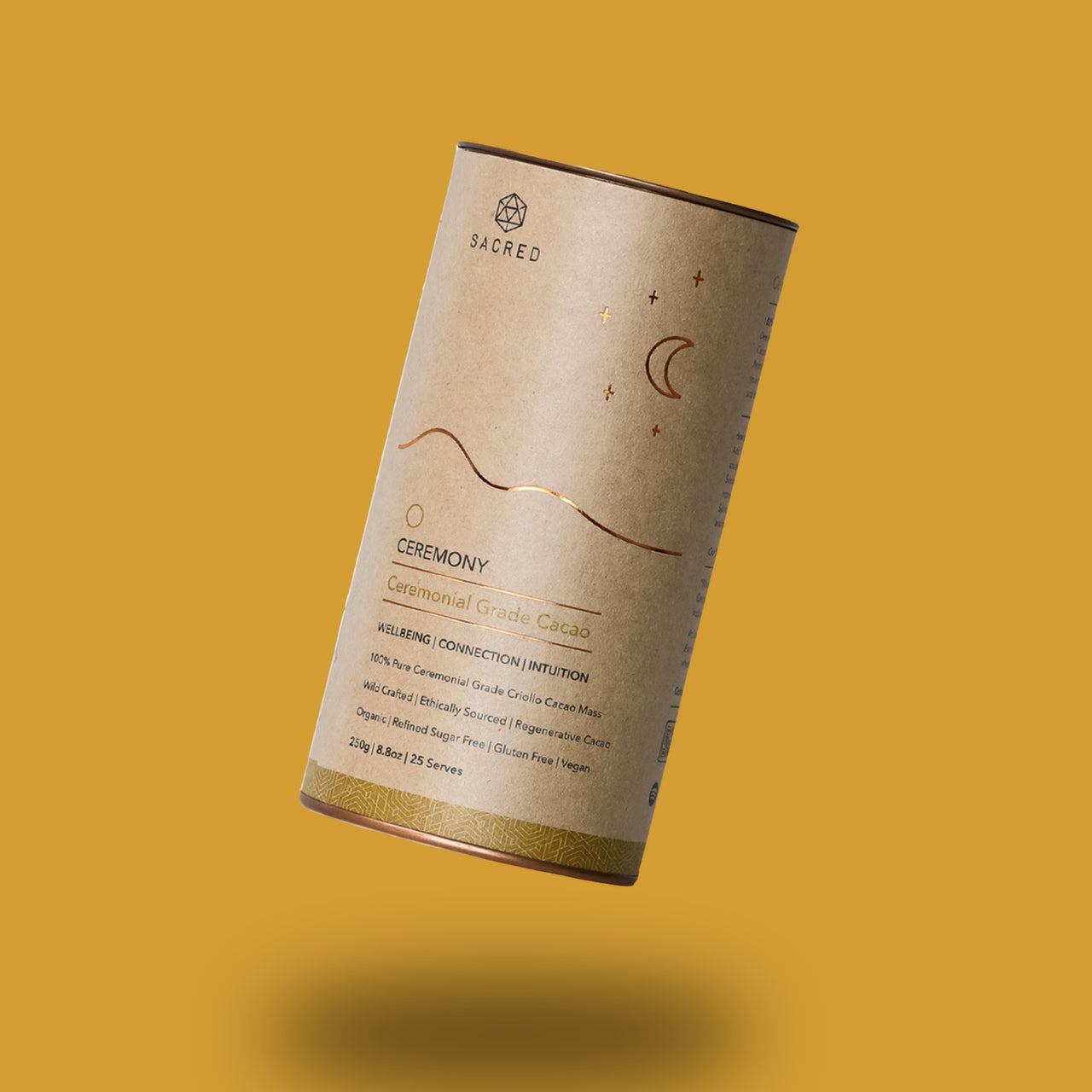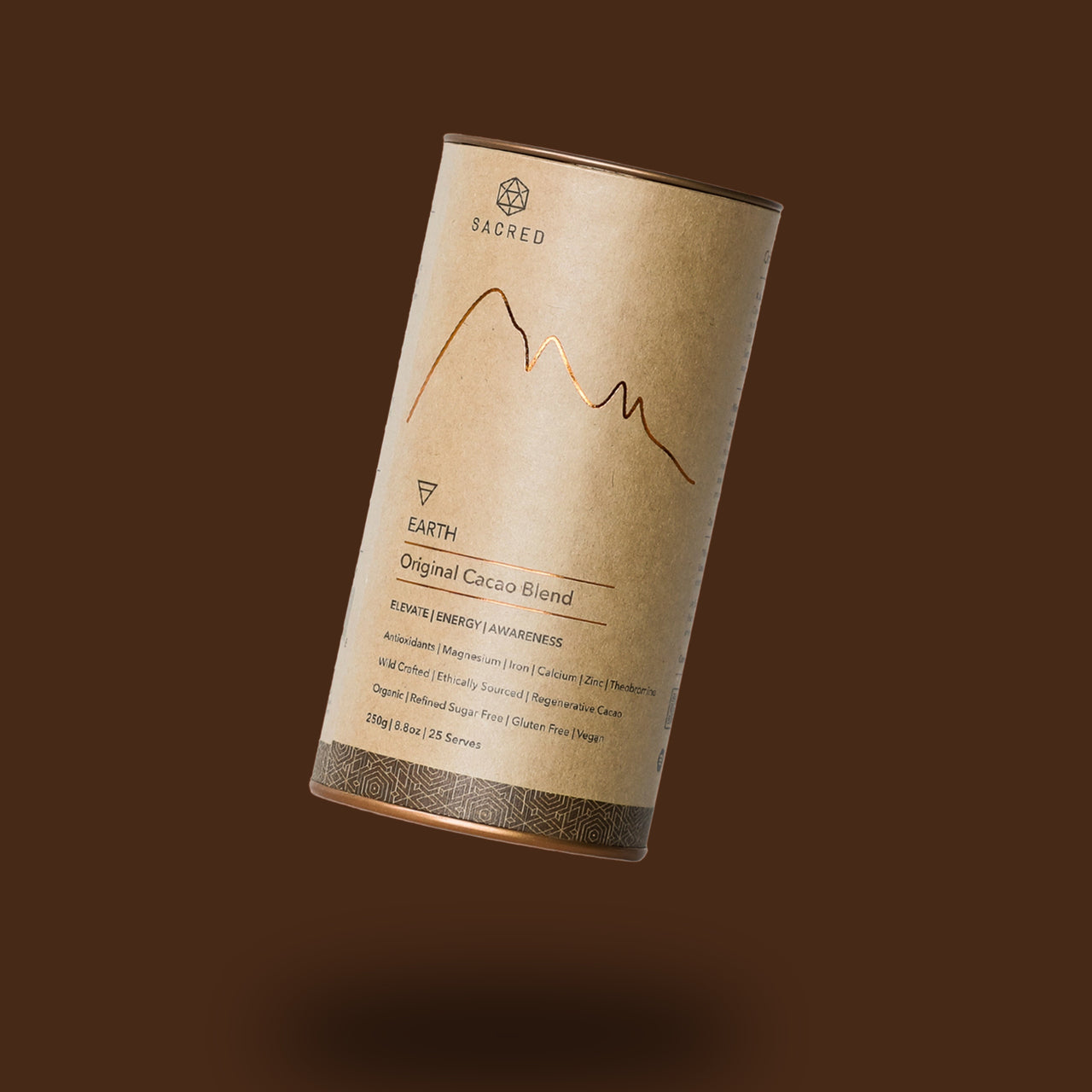You’ve probably heard the hype around cacao—often touted as a “superfood” packed with antioxidants, minerals, and health benefits. But can you really drink cacao every day and expect to feel better, more energised, or even more relaxed? As someone who's experimented with a daily cup of cacao for months now, I can tell you it’s not just a fad; it’s a lifestyle choice that offers some real, measurable benefits. But before you start chugging cacao left, right, and centre, it’s important to understand what it’s doing for your body—and when too much of a good thing might become a bad idea.
Let's dive into the benefits of daily cacao consumption and why, for most people, a little indulgence in this rich, earthy drink might just be the boost your daily routine needs.
Health Benefits Of Drinking Cacao Daily
Cacao As A Powerhouse Of Antioxidants
Think of cacao as your natural armour against oxidative stress. I first became a believer in cacao’s antioxidant powers during a trip to the lush hills of the Dandenong Ranges, where the local farmers swear by the health benefits of the raw cacao they grow. It’s packed with polyphenols and flavonoids—two antioxidants that are often the focus of research for their ability to fight free radicals, which damage cells and contribute to chronic diseases like cancer, heart disease, and neurodegenerative disorders.
In fact, some studies suggest that cacao contains more antioxidants than green tea or red wine. Imagine that! It’s a simple, enjoyable way to get your daily dose of antioxidants. So, whether you're sipping on a hot mug of cacao after a long walk or adding it to your morning smoothie, you’re giving your body an easy way to fight off the damage done by environmental pollutants, stress, and even aging.
Cacao And Heart Health
I can tell you from personal experience that when I first introduced cacao into my daily routine, I noticed a subtle shift in how I felt. It wasn’t just the energy boost (which we’ll talk about shortly), but something that lingered—a sense of calmness. That’s because the flavonoids in cacao help to increase the production of nitric oxide in your body, which relaxes blood vessels and promotes better blood flow. This has a positive effect on lowering blood pressure, particularly for people with slightly elevated levels.
I was initially sceptical, but after consistently incorporating cacao into my diet for several weeks, I noticed a slight reduction in my blood pressure numbers, which had always been on the higher side of normal. This aligns with studies showing that regular cacao consumption can help lower systolic and diastolic blood pressure, especially in those with higher baseline blood pressure. In fact, the World Health Organisation points to cardiovascular disease as the leading cause of death globally, making cacao’s role in heart health a pretty big deal.
Mood Enhancement: The Natural 'Bliss' Effect
If you’re anything like me, you’ve probably felt the light-hearted, uplifted feeling after a good square of chocolate. That’s not just the sugar talking. Cacao is rich in compounds like anandamide (nicknamed the ‘bliss molecule’) and phenylethylamine (PEA)—both of which have mood-enhancing effects.
On days when I’m feeling a bit more stressed than usual, I turn to cacao not just for its taste but for its calming effects. The combination of tryptophan (which helps produce serotonin) and PEA (which stimulates endorphins) in cacao can make a noticeable difference in how I feel emotionally. And it’s not just me; research has shown that drinking cacao regularly can improve overall mood and reduce stress and anxiety levels. It’s like a natural pick-me-up without the crash of coffee, which is why many people, including myself, have begun swapping their morning coffee for a cup of rich, dark cacao.
Focus And Cognitive Function: A Brain Boost Without The Jitters
It wasn’t until I started consuming cacao regularly that I realised just how much clearer my thinking was. I’d always enjoyed a morning coffee, but after switching to cacao, I noticed that my energy levels remained steady throughout the day, and I felt more alert during meetings and focused on tasks.
The secret here is theobromine, a compound in cacao that acts as a stimulant, similar to caffeine but much gentler. Theobromine provides a steady, sustained energy boost without the jitters and crashes associated with coffee. When combined with the flavonoids in cacao, which help improve blood flow to the brain, it can increase mental clarity and concentration. It's not just a pleasant side effect—studies have shown that the theobromine in cacao may also aid in cognitive function, potentially slowing down age-related cognitive decline. So, if you’re tackling a big project or need to stay sharp throughout the day, a cup of cacao might just be the secret weapon you didn’t know you needed.
Digestive Health: Cacao’s Fibre Boost
Cacao is also surprisingly good for digestion. Its high fibre content not only keeps your digestive system running smoothly but also acts as a prebiotic—helping to support the growth of healthy gut bacteria. I found this out during a family road trip up the coast of Queensland, where we stopped at a local café offering raw cacao in their smoothies. After a few days of drinking cacao, I noticed an improvement in my gut health. I felt less bloated and more regular, which was a refreshing change.

Recommended Daily Cacao Dosage And How To Consume It?
So, you’re convinced cacao is good for you, but how much is too much? Like anything beneficial, it’s important to consume cacao in the right amounts to avoid any potential side effects while reaping the full range of its health benefits.
Here’s a breakdown of the recommended daily dosage, based on age and individual health conditions, along with tips on how to make cacao work best for your daily routine.
Ideal Daily Cacao Dosage
The general consensus among health experts is that a safe and effective dose of raw cacao powder for most healthy adults falls within the range of 3 to 6 tablespoons (15 to 30 grams) per day. But, just like how one person’s coffee order might differ from another’s, the perfect amount for you might depend on several factors—such as your sensitivity to stimulants, your age, or if you have any underlying health conditions.
|
Age Group |
Recommended Daily Cacao Dosage |
|
Healthy Adults (18-65 years) |
3-6 tablespoons (15-30 grams) |
|
Children (6-12 years) |
1-2 tablespoons (5-10 grams) |
|
Adolescents (13-17 years) |
2-3 tablespoons (10-15 grams) |
|
Pregnant/Breastfeeding Women |
1-2 tablespoons (5-10 grams), consult a doctor |
|
Seniors (65+ years) |
Start with 1/2 to 2 tablespoons (5-10 grams), consult a doctor |
|
Experienced Users (Ceremonial) |
Up to 42 grams (but for advanced users only) |
How To Enjoy Cacao Every Day?
Once you know your ideal dosage, the next step is figuring out how to incorporate cacao into your daily diet. Luckily, cacao is incredibly versatile, and it can be enjoyed in a variety of ways without having to resort to sugary chocolate bars.
Here are a few suggestions:
1. Cacao in Smoothies
This is probably the most popular way I’ve enjoyed cacao. A spoonful of raw cacao powder blended with almond milk, a banana, and a handful of spinach makes for a nutrient-packed smoothie. The fibre in the cacao, combined with the potassium from the banana, keeps me full and satisfied until lunchtime. I especially like adding a teaspoon of chia seeds for an omega-3 boost!
2. Cacao in Oatmeal
Adding cacao to your morning porridge not only makes it taste rich and chocolatey but also boosts its health benefits. I love stirring a tablespoon of raw cacao into my oats along with a drizzle of honey and a sprinkle of cinnamon for extra warmth. It’s an easy way to kickstart the day with antioxidants and energy.
3. Cacao in Energy Bars or Bites
If you're on the go, cacao-based energy bars or protein bites can be a game-changer. Mix cacao with oats, nuts, seeds, and natural sweeteners like dates or maple syrup, then roll them into bite-sized balls for a quick snack. These can easily be made ahead of time, and they give me a much-needed afternoon boost when my energy starts to dip.
4. Cacao Drinks
If you’re more into the comforting feeling of a hot drink, cacao can be prepared just like hot chocolate—but without the sugar! I’ve started replacing my evening cup of tea with a warm cacao drink, adding a dash of cinnamon and a touch of vanilla extract. It’s a soothing drink that relaxes me, and it’s a healthier alternative to traditional hot chocolate.
5. Cacao in Baking
For those with a sweet tooth, adding raw cacao powder to your baking recipes is another way to reap the benefits. I often throw in a tablespoon of cacao into muffins, cookies, or even pancakes. The beauty of using raw cacao is that you still get all the nutrients without the added sugar from traditional chocolate products.
Tips For Maximising Cacao's Benefits
To get the most out of cacao’s antioxidants and nutrients, consider these simple preparation tips:
- Pair with Healthy Fats
Cacao contains fat-soluble compounds like flavonoids, which are better absorbed when consumed with fats. I often add a spoonful of coconut oil or a few slices of avocado to my cacao smoothie for better nutrient absorption. - Add Vitamin C-Rich Foods
Vitamin C can enhance the absorption of the iron found in cacao. Try adding citrus fruits like orange slices or a handful of berries to your cacao recipes for an extra immune-boosting punch. - Avoid Inhibitors
If you’re trying to boost the iron absorption from cacao, it’s best to avoid consuming calcium-rich foods like dairy within two hours of drinking cacao. Calcium can interfere with the absorption of iron, and this is something I’ve found useful when I want to maximise cacao’s mineral content. - Temperature Matters
Raw cacao retains more antioxidants when kept at lower temperatures. If you're making a hot drink or a cooked recipe, try to keep the temperature below 118°F (48°C) to preserve the most nutrients.
When To Consume Cacao: Timing For Maximum Effectiveness
Cacao can be a great way to boost energy and enhance mood throughout the day, but timing is important to avoid overstimulation, especially if you're sensitive to caffeine and theobromine.
- Morning Boost:
If you’re looking for a pick-me-up, morning is the best time to drink cacao. It provides a gentle energy boost, helps improve focus, and keeps you alert throughout the day. I find it works particularly well before my morning workout or when I have a busy day ahead. - Pre-Workout Snack:
Drinking cacao about 30 minutes before a workout provides sustained energy without the crash often seen with coffee. It enhances circulation and oxygen delivery to muscles due to its flavonoid content, so you can work out with more endurance. - Evening Calm:
Cacao can also be a relaxing drink in the evening. However, if you’re sensitive to stimulants, you might want to avoid drinking cacao after 6 PM as its theobromine content can cause sleep disruption.
Potential Risks And Side Effects Of Drinking Cacao Daily
While cacao is packed with health benefits, like any food, it’s important to enjoy it in moderation and be aware of any potential side effects. Having enjoyed my daily cacao routine for a while now, I’ve learned a few things the hard way—like how consuming too much can make me a bit jittery or interfere with my sleep. Below, I’ve broken down the risks and side effects to keep in mind when drinking cacao daily, so you can make the most of its benefits without overdoing it.
Stimulant Effects: Caffeine And Theobromine Sensitivity
One of the things that drew me to cacao in the first place was its gentle lift in energy. Unlike coffee, which can sometimes leave me feeling jittery or anxious, cacao has a smoother effect, giving me a boost without the crash. But here’s the catch: cacao contains both caffeine and theobromine, two natural stimulants that can affect your body in different ways.
- Caffeine in cacao (about 35 mg per 1 tablespoon of raw cacao) gives a mild stimulating effect, much less than what you’d get from a typical cup of coffee, which can have anywhere from 95-200 mg per cup.
- Theobromine, also found in cacao, has a gentler, longer-lasting stimulant effect compared to caffeine. While it boosts blood circulation and enhances alertness, it can also increase heart rate, which may cause discomfort for people with heart issues or those sensitive to stimulants.
For some people, even a small dose of these compounds can lead to side effects like:
- Jitters or Restlessness
I’ve learned that if I have cacao too late in the day, I sometimes feel a little restless when trying to sleep. If you’re sensitive to caffeine or theobromine, you might feel anxious or find it harder to relax at night. - Increased Heart Rate and Blood Pressure
While cacao can help lower blood pressure in the long run, it can temporarily raise your heart rate right after consumption. This is usually a mild effect, but for those who are particularly sensitive, it might feel uncomfortable or even cause palpitations. If you're prone to heart issues, it's worth keeping this in mind and monitoring how cacao affects your body. - Sleep Disruption
If you’re someone who struggles with insomnia or has trouble winding down at night, consuming cacao after 6 PM may interfere with your sleep. The caffeine and theobromine can stay in your system for hours, potentially leading to sleepless nights if consumed too late.
Other Risks: Heavy Metals, Calories, And Allergies

1. Heavy Metals
Some cacao, especially from certain regions, can contain trace amounts of heavy metals like cadmium and lead due to the soil it’s grown in. These metals can build up in the body over time. While the levels in cacao are generally low, it’s a good idea to choose high-quality, organic cacao where possible.
Tip: Look for cacao that is third-party tested for contaminants if you're concerned about heavy metals.
2. Calories, Fat, and Sugar
Pure cacao powder is relatively low in calories, fat, and sugar. However, processed chocolate products can be high in added sugars and unhealthy fats. Be mindful of your total calorie intake if you’re consuming cacao in chocolate form rather than raw powder.
Tip: Stick to pure cacao or dark chocolate with at least 70% cocoa to avoid excess sugar and fat.
3. Allergic Reactions
Though rare, some people may have an allergy to cacao or chocolate. Symptoms can include hives, stomach cramps, and respiratory distress. If you experience any of these symptoms after consuming cacao, discontinue use and consult a doctor.
Tip: If you suspect an allergy, try a small amount of cacao first and monitor for any adverse reactions.
Incorporating cacao into your daily routine can be a healthful and delicious way to boost mood, improve cardiovascular health, enhance cognitive function, and support digestion. However, like any powerful food, moderation is key. For most healthy adults, a daily serving of 3 to 6 tablespoons (15 to 30 grams) of raw cacao is safe and beneficial. Just be mindful of the potential risks—especially the stimulant effects, digestive issues, and interactions with certain medications.
Suppose you're new to cacao or have any underlying health conditions. In that case, it's always a good idea to start small and gradually increase your intake, while paying attention to how your body responds. With the right balance, daily cacao consumption can be a delicious, energising part of your wellness routine.
If that’s not enough, cacao also contains more antioxidants than blueberries and green tea combined! Our founder Dan Koch says, "So many people ask me if I’m in my twenties, I don’t know if they’re joking. I’m 36! I live in a stressful environment, always on the go. For me to get compliments like that, that’s saying something about the health benefits of cacao."
Do you drink cacao everyday? Have you noticed the benefits? For more about where we source our cacao read about The Ashaninka Way of Life.
Sacred Cacao | Shop
Written by Laura Roberts
Connect | www.instagram.com/artful_listening
















